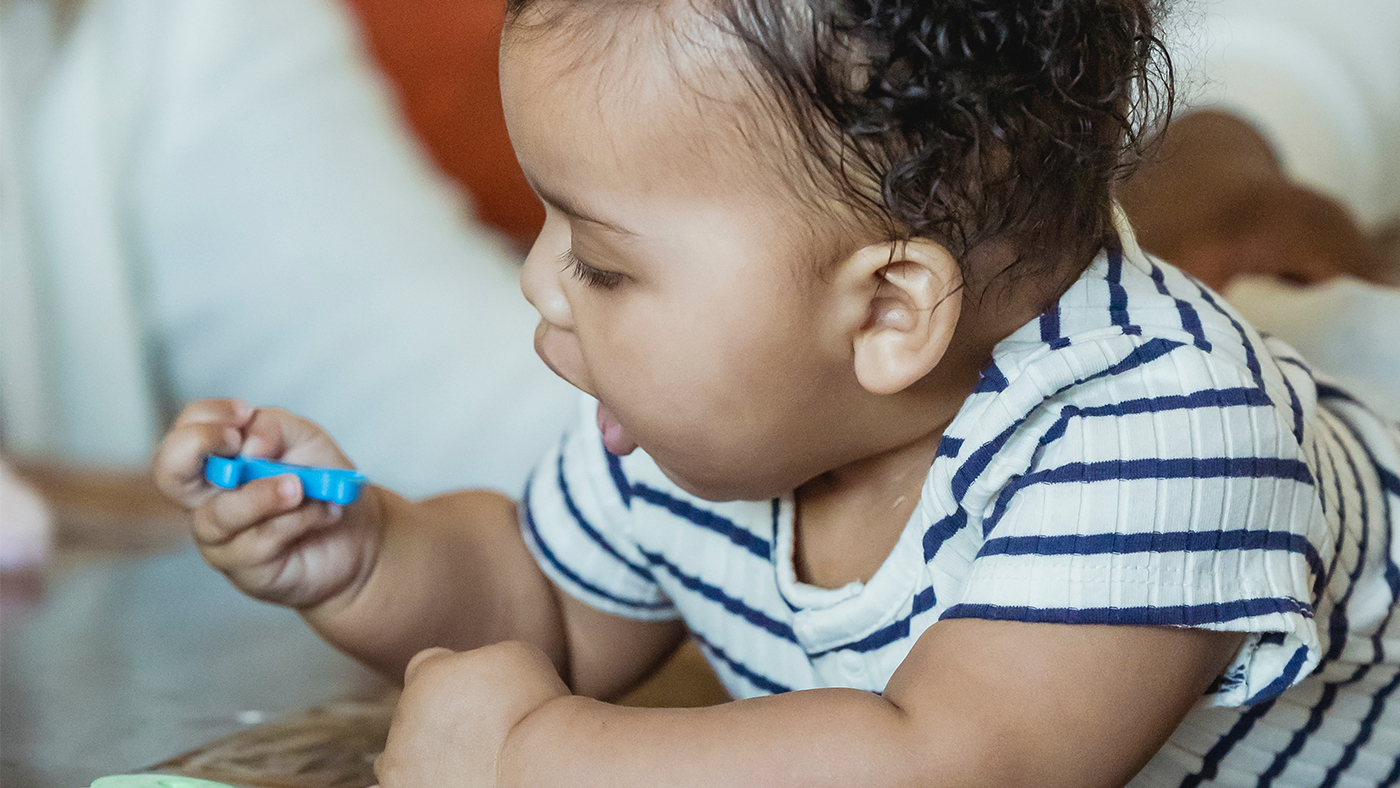Looking closer at your baby's hold and control

Your baby will have been watching and moving their hands with more control recently, and you will probably have seen them hold objects towards the outside of their hand using one or two fingers to hold it in place. Now they will curl all of their fingers around an object and hold it towards the centre of their palm – this is knows as a ‘palmar grasp’.
Developing strength and control of larger movements and then smaller ones
Your baby develops strength and control of their muscles from their head to their toes, and from the centre of their body to the extremities. Initially, you will have noticed them learning to control their head, move their arms or kick their legs. Now they are starting to develop more control of their hands and fingers, and they can hold and move objects.[1]
This control of movement of the arms is linked to the development of fine motor skills of the hand. Your baby will use their arm to position, support and adjust the force used when moving their hand.[2]
Your baby will be starting to reach for objects as they gain control of their arm movements, and this will provide them with opportunities to grasp toys and objects. They will hold objects using their palm and fingers, but they will not use their thumb to support objects (at first).[3]
Handling objects and moving their hands in different ways will support your baby to develop control of their movements.
They will also make links between what they feel as they hold an object in their hand and what they see when they look at the object.
Holding and manipulating objects
We use our hands to hold objects and to manipulate what we are holding.
Manipulation involves using our fingers to move an object that we are holding and to let go of it too. The way in which we can hold an object is linked to the development of control and strength of our hands, so your baby will, as they develop, have the control and strength to hold objects in different ways.
Manipulation is linked to control of the fingers; at first, your baby will use movements of their arms to manipulate objects as they won't have the control of the movements of their fingers to use these to move an object in their hand.
While the palmar grasp allows your child to hold objects, it doesn't give them the control to manipulate an object. But it is a step towards developing greater control and learning about objects as your baby can now reach and hold them.
Controlling smaller objects will take time and practice
The development of the skills to manipulate and control smaller objects will take some time and lots of big and small movements. You will gradually notice that your baby can pick up smaller objects and control when, and where, they put them down.
Your baby will explore moving their hands in different ways and might bring their hands together to explore movement. And soon they will begin to use their thumb when gripping objects and will hold an object with both hands.
References:
[1] Goddard-Blythe, S. (2004). The Well Balanced Child: Movement and Early Learning. Stroud: Hawthorn Press.
[2] Sugden, D & Wade, M. (2013) Clinics in developmental medicine. Typical and atypical motor development. London: Mac Keith Press.
[3] Sheridan, M., Sharma, A and Cockerill, H. (2014). Mary Sheridan’s from birth to five years. Children’s developmental progress. (4th edn.). Abingdon: Routledge.